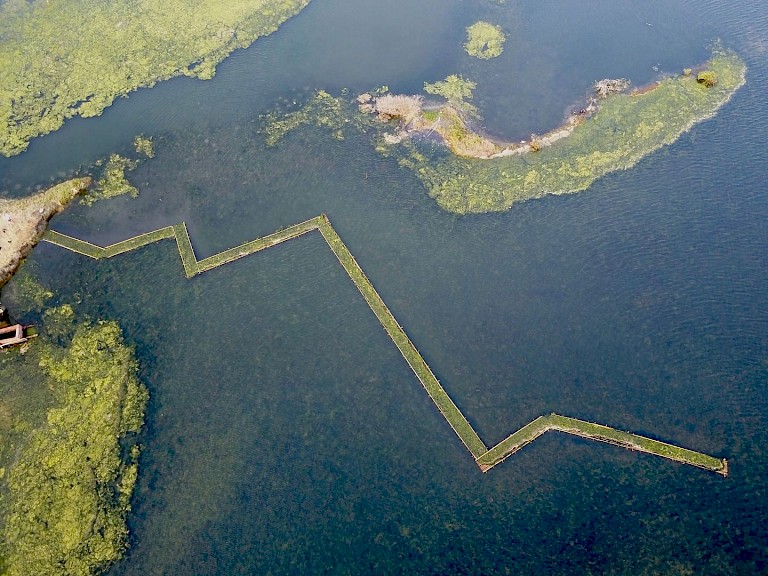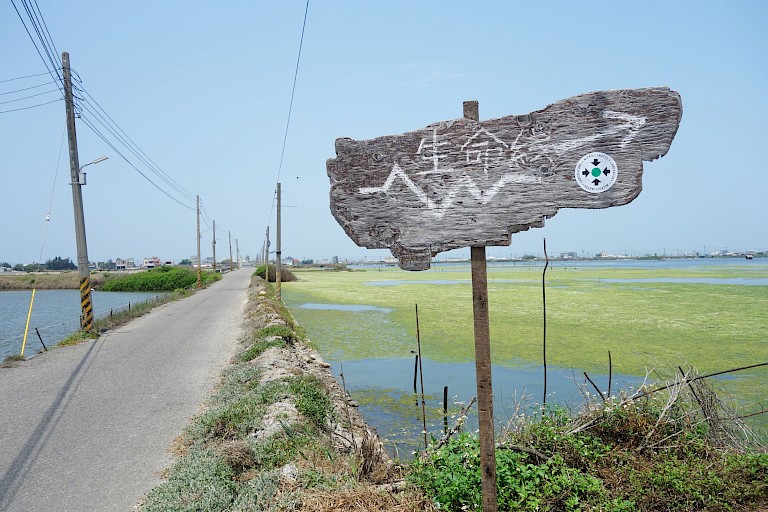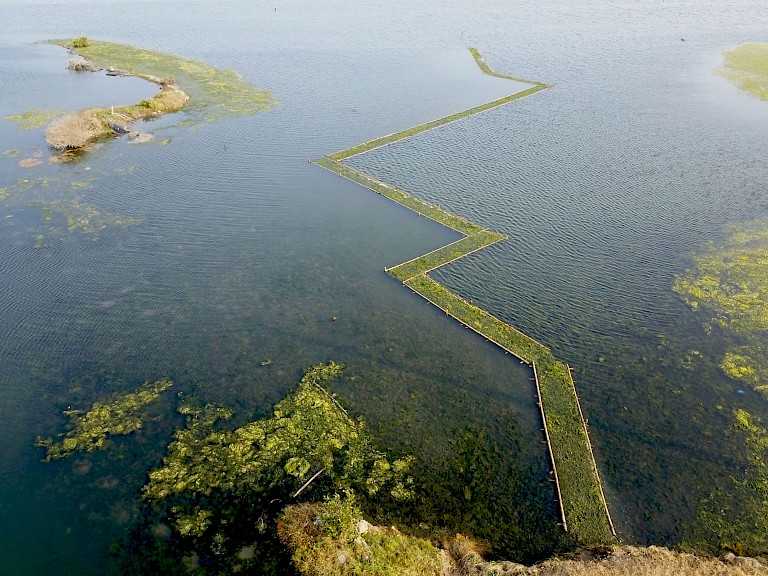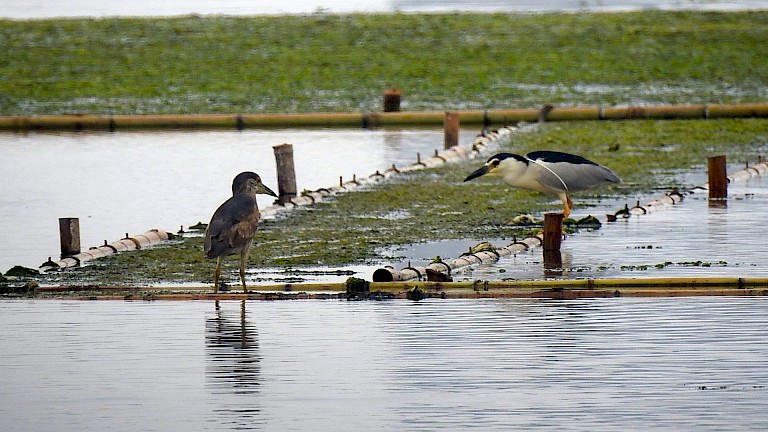



ARTIST: Laboratory for Microclimates. Annechien Meier, Gert-Jan Gerlach
ARTWORK/YEAR: The Micro-climatc Life Line (2017)
REGION: East and Southeast Asia
RESEARCHER: Alice Smits
Art installation 'The Microclimatic Life-line' was placed in the water-rich nature area of Cheng Long Wetlands in Taiwan and consists of local, natural, biodegradable and recycled materials. The artwork can inspire people to take action to reduce the impact of climate change by making changes in their own environment. The Microclimatic Life-line artwork visualises both the rhythmic cycle of a heartbeat as well as a crucial moment to save us in dangerous situations.
The history of the environment where the exhibition took place and the climatic factors were more extreme than expected. The artist stayed in one of Taiwan's poorest fishing villages. The Chenglong Wetlands originated after 1987 when, after a violent typhoon, a large part of Taiwan's west coast flooded; not only did many people pass away, but also the original agricultural area with trees flooded by the sea water. As a consequence, agricultural land was no longer useful as such and fish farms were built. These massive concrete farms dominate the coastal area and caused that almost all of the original vegetation (plants and trees) have disappeared. Ground water is used to provide these fish farms with freshwater. This causes a substantial reduction of the soil in relation to the seawater level. Fortunately, some farms have recently started using seawater to prevent further ecological problems.
As a location for the The Microclimatic Life-line, the artists chose the area which was struck by the typhoon, where a crematorium with cremated remains of deceased victims which were buried in this area can be seen on the horizon. 'The Microclimatic Life-line' consists of eleven connected rafts made of bamboo and covered with algae. The rafts are made using traditional techniques using bamboo pen and hole joints; were were trained to usethis technique by a local 'bamboo master'. On frames, strips of split bamboo were knotted with the help of villagers and various school children. The result is a biodegradableart installation that will disolve slowly into the Wetlands. During the opening, visitors received an explanation of the artwork and were invited to join the 'Algae Experience'.
Art installation 'The Microclimatic Life-line' was placed in the water-rich nature area of Cheng Long Wetlands in Taiwan and consists of local, natural, biodegradable and recycled materials. The artwork is placed in a historical and futural context, can inspire people to take action to reduce the impact of climate change by making changes in their own environment. The Microclimatic Life-line artwork visualises both the rhythmic cycle of a heartbeat as well as a crucial moment to save us in dangerous situations Working together with local people it has a stong connective spirit.
The artists were invited by curators Jane Ingram Allen (California, USA) Chao-Mei Wang (Taiwan)to the 2017 Cheng Long Wetlands International Environmental Art Project Taiwan. This international environmental art project and program exists since 2010 and consists of an annual art / environment and education program in Cheng Long. For the Cheng Long Wetlands, 6 international artists were invited to make site-specific outdoor art installations that raise awareness and stimulate people to take action regarding the changing climate; the rising sea level, strong wind and powerful hurricanes in the Taiwanese Cheng Long area (south / west of Taipei). The purpose of Cheng Long Wetlands project is to raise awareness and collective responsibility for the environment and the way people interact with each other. Artists work together with local residents. Therefore the art project has an ecological but also social character.
All copyright belongs to Shanghai Academy of Fine Arts, Shanghai University.




